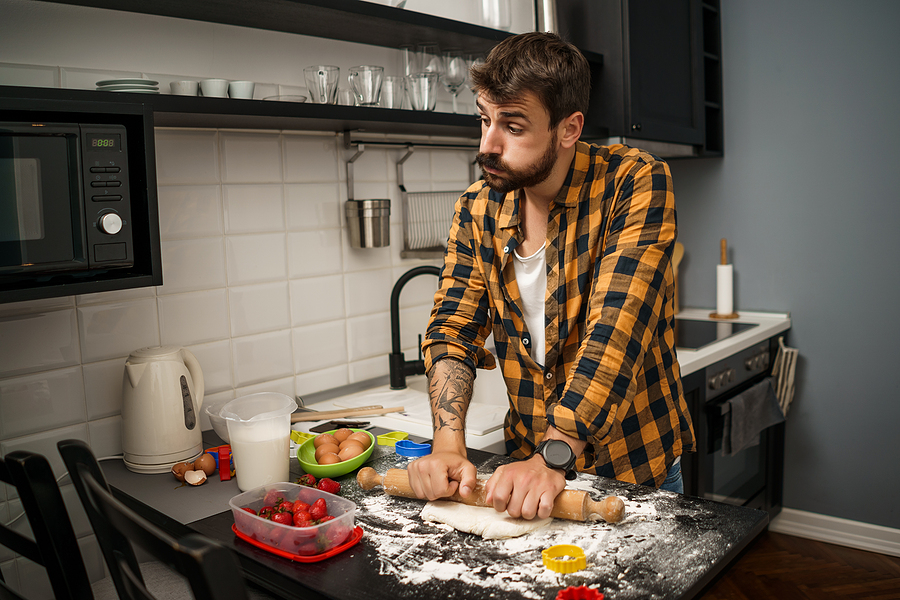
Your Greatest Branded Content Creation Opportunity Has Arrived
August 2nd, 2020 Posted by Emergent brand advocacy, brand marketing, brand messaging, Brand preference, branded content, consumer behavior, Consumer insight, Content Marketing, Culinary inspiration, Culinary lifestyle, engagement, food experiences, Healthy Living, Higher Purpose, storytelling 0 comments on “Your Greatest Branded Content Creation Opportunity Has Arrived”Food and beverage brands can take the lead as coach and guide
Your brand’s best opportunity for real engagement occurs when consumer need and your expertise overlap at precisely the right moment. And that moment is now. It’s here, we’re in it. You have an opportunity to become a trusted partner, a useful resource, at a time when families are running out of menu ideas and kitchen fatigue is setting in.
- We’ll provide guidance on what to do, but first let’s take a look at what’s happening right now that creates this important opening for brands to build a more meaningful relationship with their users.
Consumer research continues to reinforce a significant shift, and likely permanent change, to an increase in at-home meal preparation occasions. The pandemic has prompted millions of families to get back into the kitchen full time. Working and schooling from home makes this a three meal a day duty. Some are new to this culinary endeavor and the learning curve is upon them. Cooking veterans consistently have to devote more time and attention to laboring over the stove.
According to a recent “COVID-19 Impact on Eating” report from The Hartman Group, 93% of dinner eating occasions are prepared and consumed at home.
- Even more amazing is the surge in lunch; 81% of occasions are occurring at home.
- Dinner menus involving ‘heavy’ preparation are at 31% of occasions, up 9 points from a year ago, while lunch occasions requiring moderate preparation have jumped to 33%, up 14 points from 2019.
In sum, despite the dramatic falloff of restaurant eating events, Americans are choosing to cook rather than outsource their meals. The research also reveals that 33% of all eating and drinking occasions are in service of health and wellbeing objectives – no surprise given the elevated importance of health and wellness. People are purposefully making an effort to protect their immune systems while the pandemic continues to ravage the nation.
Kitchen burnout is a reality and it has arrived
Food, beverage and food retail brands are afforded an extraordinary opportunity to become a useful coach and resource for home cooks. This comes at a time when they not only need inspiration and instruction but personal encouragement and emotional support as well.
Considering people are spending more time at home, menu creation has taken on a new significance and importance for families. Previous studies of home cook behaviors determined that most have a repertoire of roughly 10 dishes they know well and will continue to keep in rotation. However, after months and months of repeat visits, menu weariness sets in as home chefs run out of ways to freshen their tried and true dishes.
Reinforcing the permanent home cooking shift is health and wellness aspirations
Alongside this cooking-from-necessity condition is a growing appreciation that home cooked meals are generally:
- Healthier, more nutritious
- Portion controlled
- Completely customized
- Convenient to scheduling
- Safer
- And can be functionally curated to support health and wellness objectives
Being relevant to consumers is the precursor to creating authentic engagement opportunities with them. What consumers are experiencing now puts your brand in an enviable position to be useful and helpful at a moment of real need.
“During this worrisome time many have re-discovered latent cooking expertise and more than a few have developed newfound culinary skills, but also most are feeling a bit weary and are reporting varying degrees of family meal fatigue. Our meal preparation muscles are tired, tested and stretched. Still we know the nutritional and family functioning benefits are out there awaiting us,” wrote David Fikes in a recent The Food Industry Association report ahead of their annual National Family Meals Month promotion in September.
“In other words, now, when we’re tired, we most need the encouraging words of an inspiring trainer urging us to push beyond the fatigue, work through the discomfort and get reenergized about family meals, if we wish to reap the solid benefits they hold for us in terms of health, happiness and well-being,” he said.
Perfect moment for the most effective brand content strategy
Storytelling is best served when proper roles are recognized and respected. Consumers want and need to be the heroes of their own life journeys. The brand’s optimal function in this scenario is as coach and guide. That’s precisely what is required here. Your ability to step in with emotional support, inspirational culinary ideas and guidance on preparation skills and innovative cooking techniques will help consumers save time and avoid mistakes.
- Your goal is to make the home chef more successful and comfortable in their kitchen-centric calling.
How to optimize this moment for connection and relationship building
Empathetic voice
Now is the time to put the brand ‘in league’ with the consumer by acknowledging the frustrations and burnout they may be feeling after months of constant meal preparation. It gets tough after the entire family is around the dining room table nearly seven days a week for months with no end in sight.
Food is an emotional category
Food consumption is enjoyable, social, indulgent, and can be transformational. This isn’t just about skills and cooking temperatures, it’s also about the table, experimentation, creativity and taste experiences.
Keep it simple
People literally run away from complexity and communication that taxes their brains. People are hardwired to avoid burning mental calories, so ideas and menus need to be presented simply, clearly with an eye towards simplifying what people must tackle in the kitchen.
Video and webinar are the right mediums
Harness the incredible capability of video to marry instructional or emotive words with pictures to amp the entertainment value. This will help people better understand through visual demonstration what they should be doing to bring great food to life.
Credible experts can help
Chef voices can elevate the conversation and add viewer interest to what you produce. As we said earlier, people now see food as a direct channel to improving their own health and wellbeing. Outside experts in nutrition and wellness add more authority to what your presenting. People are more likely to respect credentialed third-parties than in-house voices.
Social proof and trust creation
Consumers love to hear from other consumers. Employ your social channels to engage the community in sharing their own culinary content, recipes and ideas. People are far more likely to engage their peers before they’ll accept the assertions and claims brands make.
Transparency
Consider virtual farm visits with your suppliers and an opportunity to hear the personal stories of the families who create the ingredients you use. This serves as a transparency mechanism where customers get to see first-hand how your ingredients are sourced and then how your recipes are created.
Don’t wait
Now is the time to create a content calendar and begin operating in service of your customers during their time of need. With work-at-home looking like an ongoing condition and schooling- from-home likely to occur for many young people in the fall, kitchen and menu burnout isn’t going away any time soon.
This is a time for experimentation and openness to trying new flavors and cuisines. With the tried and true dishes most home cooks repeat losing their luster, people are gravitating to new experiences. In light of this condition, they need the guidance and expertise you can provide to bring new food ideas to the table.
Need help creating and building a strong culinary content calendar and fresh creative assets optimally messaged to engage home cooks in the right way? We can help! Let’s discuss your needs in greater detail.
Looking for more food for thought? Subscribe to the Emerging Trends Report.
Bob Wheatley is the CEO of Chicago-based Emergent, The Healthy Living Agency. Traditional brand marketing often sidesteps more human qualities that can help consumers form an emotional bond. Yet brands yearn for authentic engagement, trust and a lasting relationship with their customers. Emergent helps brands erase ineffective self-promotion and replace it with clarity, honesty and deeper meaning in their customer relationships and communication. For more information, contact [email protected] and follow on Twitter @BobWheatley.




